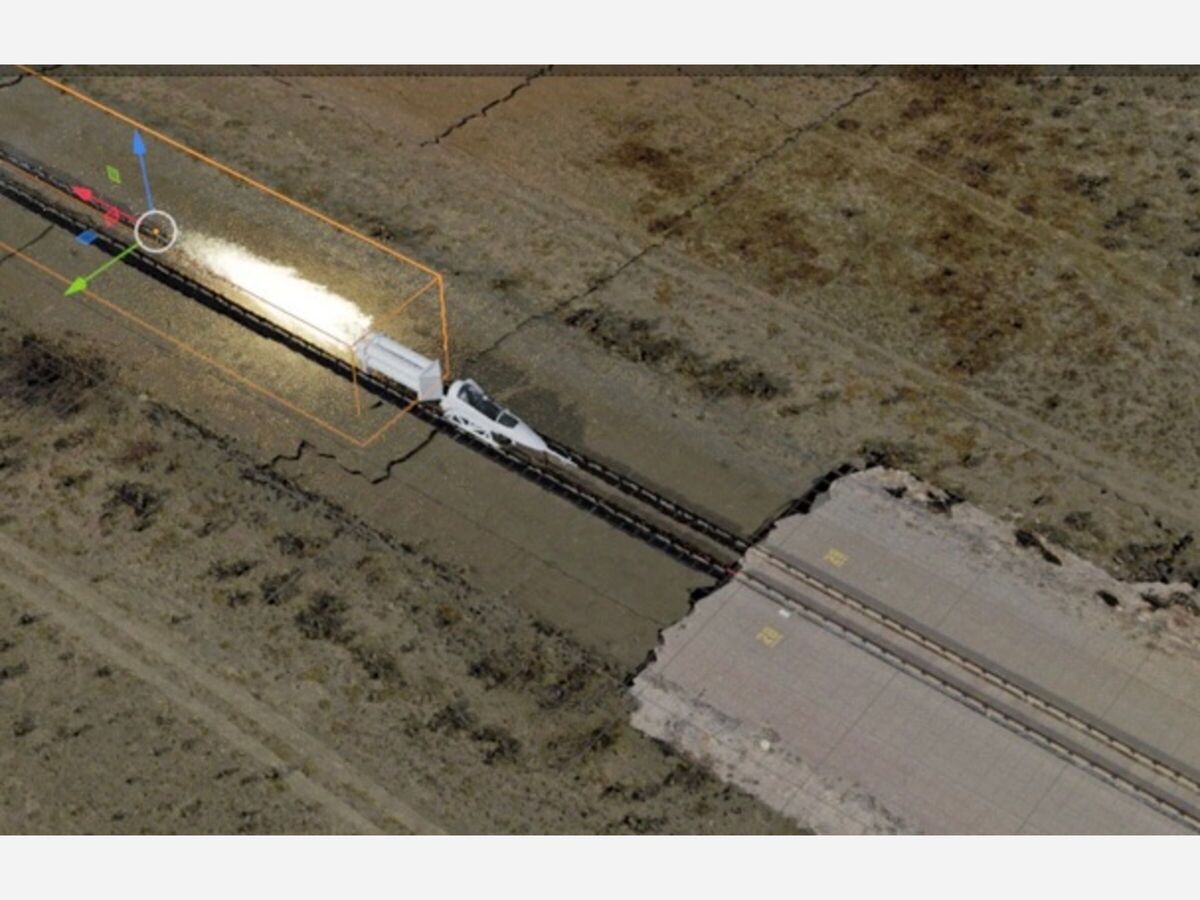Image


HOLLOMAN AIR FORCE BASE, N.M. —
In the desert of New Mexico the women and men of the 846th Test Squadron, 704th Test Group, Arnold Engineering Development Complex ship take a look at articles strapped to rocket sleds hurtling alongside rail tracks as much as 10 miles lengthy.
Some exams, reminiscent of ejection seat and goal penetration testing, ship particles throughout the desert; which is catalogued as a part of the info assortment for the take a look at.
Project Zero is an effort by the 846 TS and the Strategic Development Planning and Experimentation Office, or SDPE, of the Air Force Research Laboratory, which goals to automate the duty of figuring out and monitoring each deliberate and unplanned particles from exams on the Holloman High Speed Test Track, or HHSTT, with using small, unmanned plane programs, or sUAS, higher generally known as drones, and machine-learning algorithms, a subset of synthetic intelligence, or AI.
“If successful, Project Zero would reduce Airmen’s time searching and finding debris components, and increase safety by ensuring explosive ordnance disposal personnel spend less time in an area of dangerous wildlife, unexploded ordnances and desert heat,” mentioned Maj. Ryan Middleton, C-130 navigator and experimentation lead with SDPE. “Project Zero may also improve data collection, providing a unique perspective to capture tests.”
The 846 TS has used sUAS to acquire a hen’s-eye view on the observe, nevertheless it was completed in a guide mode, versus the automated, artificial-intelligent pushed operations and information evaluation being pursued by Project Zero.
“We are all the time open to automating guide processes and exploring options that will improve effectivity and security,” mentioned 2nd Lt. Aaron Runnells, a rocket sled take a look at engineer with the 846 TS. “The thought of leveraging machine studying to coach drones to be used in the actual world, or use in real-world eventualities, might unlock a brand new means of information assortment with out the hazards of getting to be bodily on location.”
The effort at HHSTT gives a chance to match using artificial information in opposition to utilizing real-world information for the coaching of fashions. The group can also be learning how digital environments could also be used to know vulnerabilities and resiliency in machine-learning algorithms previous to being deployed.
“The partnership between the Air Force Test Center’s 846th Test Squadron and AFRL’s SDPE division is an ideal match; we provide a related use-case, together with many years of information to coach fashions, and SDPE gives the experience and experimentation group to shortly decide how shortly we will discipline this functionality,” Runnells mentioned.
The take a look at case state of affairs for Project Zero entails testing ejection occasions on a wide range of plane. When the ejection system is used, the cover is fractured to permit for the pilot to be ejected from the plane. This creates a discipline of particles that have to be recognized, positioned and picked up.
Project Zero is digitally recreating the HHSTT with open-source instruments from the leisure and video-gaming trade. Within the digital HHSTT, ejection system testing can be recreated based mostly upon physics fashions and utilizing video-gaming engines, and utilized to coach machine-learning fashions to establish, observe and report location of the particles.
“The digital environment allows for efficient training by modeling different scenarios – environmental conditions, test scenarios, malfunctions – to increase the resiliency of the models,” Middleton mentioned. “And our open-source approach is how we move fast – we tap into the world-wide community of software developers for updates, bug fixes and new tools.”
Conducting analysis to search out scalable methods of guaranteeing artificial-intelligence and machine-learning fashions are protected and resilient, reminiscent of Project Zero, is in keeping with the Department of Defense technique for accountable AI.
“The 846th Test Squadron, with its unique mission, multidisciplinary team and range, offers the proving ground for machine learning experimentation with real-world use cases,” Middleton mentioned. “SDPE is excited to partner with the 846th Test Squadron, not just for the experimentation opportunity, but also that Project Zero may improve data collection and improve safety for the 846th Test Squadron. The open-source, digital tools that create the environment can be used by other organizations in the DOD to build their own events to train ML [machine-learning] models.”
Runnells agreed.
“If we get this proper, we’ll display the power to coach a drone with machine-learning in a digital atmosphere the place simulations may be repeated a number of instances saving money and time,” he mentioned.
Middleton additionally famous how efforts reminiscent of Project Zero present alternatives for DOD to acquire help from industries which aren’t historically seen as a part of the protection industrial base.
“This is one example of how to attract new and non-traditional talent to support AEDC mission sets,” he mentioned. “The modern imaginative and prescient of the 846th Test Squadron management permits for brand new partnerships with trade, and the technical competence of AEDC engineers excites trade engineers to help vital DOD mission units.
“Project Zero includes virtual effects artists from Hollywood’s entertainment industry as well as roboticists and machine learning experts – some who would not traditionally consider working with the DOD. They were drawn to this effort given the complex engineering challenges of the HHSTT, and the idea that outcomes could increase safety for pilots and explosive ordnance disposal personnel.”
By Jill Pickett, AEDC Public Affairs